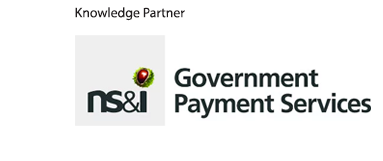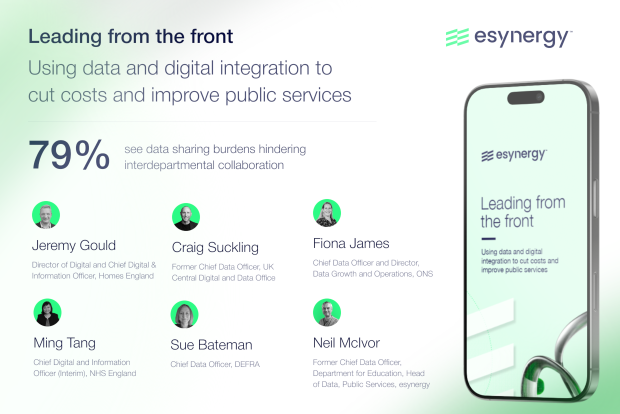Gain and maintain: how government can build trust in the era of digital transformation

“One of the things about trust is it takes a long time to build and can be lost in a split second.”
In our latest episode of the Government Transformed podcast – produced by Global Government Forum with support from knowledge partner Visa – expert guests discuss why trust is a prerequisite for the delivery of successful digital services, and how to earn it.
Guests Eilidh McLaughlin, head of the Scottish Government’s Digital Citizen Unit (the opening quote is hers) and Ben Roseth, modernisation of the state senior specialist at the Inter-American Development Bank, cover a lot of ground, from the importance of inclusivity and the merits of integrated service centres, to data protection, and learning from the private sector.
Subscribe to Government Transformed on Apple Podcasts, Spotify, Google Podcasts or Acast.
Asked why there should be so much emphasis on trust in transformed services, Roseth says “One word: uptake”.
“If users don’t trust the digital services, they’re not going to use them. And if they don’t use them, then neither the government nor the citizenry are going to get any of the benefits that digital services can entail – the greater efficiency, the greater transparency, the greater objectivity.
“Governments are often bounding headfirst into digital transformation and spending lots of money… but it’s all for naught if the digital services are not going to be used. So if we see trust as a prerequisite to uptake, then trust is a prerequisite for getting value for money.”
What’s key to uptake, McLaughlin highlights, is inclusivity. Users must be at the heart in any service design process in government, but quite often “we’re not thinking about all users”, she says. People who are digitally excluded, who live in poverty, who are disabled, or who have mental health conditions often lack trust in government, so demonstrating that they’ve been considered when new services are launched is vital. She explains how the Digital Citizen Unit is doing this, as well as its broader remit.
Roseth agrees that starting with usability and user-friendliness is of paramount importance, and what’s essential, he says, is not taking citizens’ perceived experience of using a service at face value but using observational techniques to properly see how they engage with it and to fix any issues. This could entail a change as simple as moving a button from the left to the right, or adjusting the language used in forms.
“Demonstrate to [citizens] that government is trying to make their lives better,” he says.
The merits of integrated service centres
Both Roseth and McLaughlin speak of the need to balance digital services with the in-person services some citizens require.
If the focus is truly on “making government more citizen orientated, to meet citizens where they are, and give them their services in a way that is most helpful to them”, then Roseth sees scope for an omni-channel approach in which citizens can access a service online but also talk to someone in person if needed. He gives the example of integrated service centres where people can access anything they need under one roof.
What might also be useful in fostering trust, Roseth says, is allowing citizens to leave public reviews for government services, and for governments to enable ‘tracking’ for certain services – in much the same way that retailers and delivery companies allow people to see where their parcels are – so that people can see the progress of a passport application, for example. “Data milestones that give citizens peace of mind,” as he puts it.
Data protection and cybersecurity
McLaughlin and Roseth also share insights into how governments can prevent loss of trust, focusing particularly on data protection, cybersecurity, transparency and accountability.
“We cannot presume that people actually understand how we’re going to use their data,” McLaughlin says. “We tend to do privacy notices in very legalistic terms – they don’t often explain data flows particularly well and they certainly can’t explain to people very easily at which point… they may be able to either extract their data, ask for it to be restricted, or indeed correct it.”
Making clear who a citizen should contact if they are worried about how their data is being used, and ensuring government is transparent if there are data breaches is vital if trust is to be gained and maintained.
McLaughlin also advises “communicating with people even when you don’t have much to communicate. It’s the silence that breaks the trust”.
Touching, too, on why citizens so readily hand their data over to private sector companies yet are reluctant to do so with government, and trust in the context of digital services in Latin America and the Caribbean, join this week’s guests for a fascinating deep dive into trust in government – at a time when so many institutions are lacking it.
The fifth and final episode of Government Transformed Series 1 – Tracking the digital transformation journey – from Barbados to Iceland – will be out next week. It features Vigdís Jóhannsdóttir, chief marketing officer at Digital Iceland, and Marva Howell, permanent secretary of the Barbados Ministry of Innovation, Science and Smart Technology.
Subscribe to Government Transformed on Apple Podcasts, Spotify, Google Podcasts or Acast and go to GGF’s podcast page for updates.
Previous episodes:
Episode 1: The difference between digitalisation and true transformation in government
Episode 2: Making digital transformation happen in government: from the ‘why’ to the ‘how’
Episode 3: How the centre of government can be an enabler – not a blocker – of public service digital transformation





















